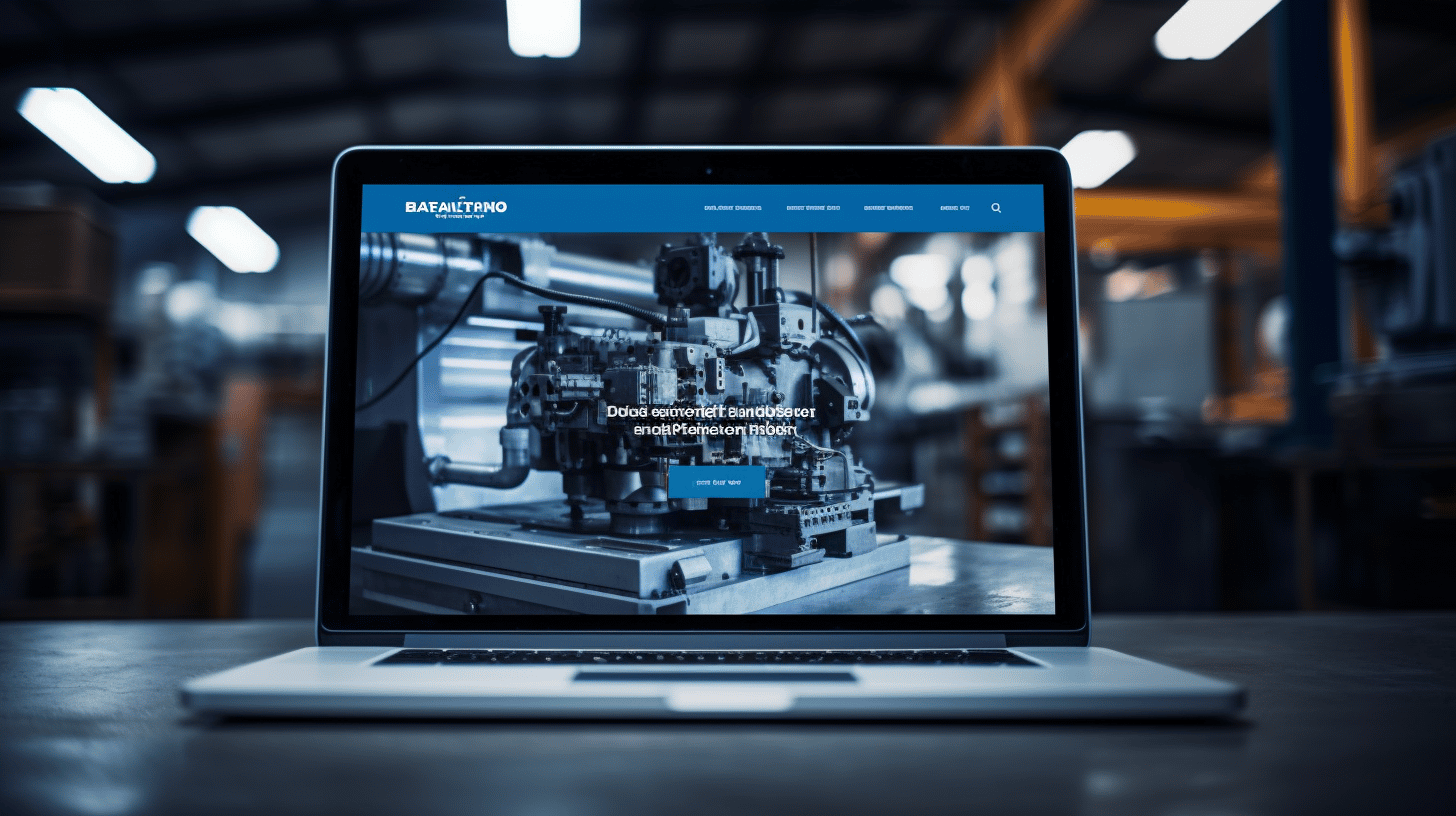In today’s digital age, online shopping has become increasingly popular as consumers seek convenience, variety, and competitive prices. With just a few clicks, shoppers can browse through a vast array of products and have them delivered to their doorstep. As a result, businesses are recognizing the importance of establishing a user-friendly online shop to cater to this growing trend.
When it comes to building an e-commerce website, WordPress is an excellent platform choice. It offers a range of powerful features and customizable options that make it easy for businesses to create a visually appealing and functional online store. In this article, we will explore some valuable WordPress website design tips specifically tailored to enhancing the user experience of online shoppers.
But before we delve into the design tips, let’s take a closer look at the rising popularity of online shopping and how it has transformed the retail landscape.
The Rising Popularity Of Online Shopping
🛍️💻
Online shopping has become an increasingly popular method of purchasing goods and services in recent years. The convenience and accessibility it offers have changed the way people shop. In this article, we will explore the reasons behind the rising popularity of online shopping and discuss some insightful trends in the e-commerce industry.
Overall Market Size
📈 The online shopping industry has witnessed tremendous growth, and its market size continues to expand. According to recent statistics, approximately 22.6% of total retail are digital orders. This figure highlights the significant impact online shopping has had on consumer behavior.
Number Of Online Shoppers
🌐 Another notable trend is the increasing number of online shoppers. With the widespread availability of internet access and the growing adoption of smartphones, more and more individuals are turning to online platforms to fulfill their shopping needs. It is estimated that by 2025, there will be a staggering 285 million online shoppers.
💻 Online shopping has transcended geographical boundaries and allows consumers to access products and services from anywhere in the world. This accessibility has opened up new opportunities for businesses to reach a global customer base and has contributed to the overall popularity of online shopping.
Trends in E-commerce Sales
💰 The future prospects for e-commerce sales are promising. The industry is projected to exceed $6.3 trillion in sales by 2024. This upward trend can be attributed to various factors, including technological advancements, improved shipping and delivery options, and enhanced security measures.
👨💻 In addition to the increase in overall sales, online shopping has become more prevalent among a wide demographic range. Over 80% of the U.S. population now shops online, indicating the widespread acceptance and adoption of e-commerce platforms.
📈 The growth potential of online shopping is further exemplified by projections that indicate e-commerce sales could reach a staggering $8 trillion by 2027. This forecast underscores the ever-increasing popularity and significance of online shopping in the global marketplace.
In Conclusion
🛍️💻 The rising popularity of online shopping is driven by its convenience, accessibility, and a vast range of products and services available at the click of a button. The e-commerce industry shows no signs of slowing down, with significant growth projected in the coming years. As technology continues to advance and consumer preferences evolve, online shopping is expected to become an integral part of our everyday lives.
Importance of User Experience In Online Shopping
With the rise of e-commerce, user experience (UX) has become a crucial factor in the success of online shopping. In today’s competitive landscape, businesses need to prioritize creating seamless and enjoyable experiences for their customers. A positive UX not only enhances customer satisfaction and loyalty but also drives sales and revenue.
Online Shopping Abandonment Due to Poor UX
Did you know that 60% of online shoppers abandon their purchases due to poor user experience? That’s a staggering number! It goes to show how critical it is for businesses to invest in creating intuitive and user-friendly interfaces. Here are a few reasons why users might abandon their shopping carts:
- Complicated navigation and confusing layout
- Long loading times and slow website performance
- Lack of trust and security concerns
- Difficulty in finding desired products or information
To combat shopping cart abandonment, businesses must focus on optimizing their website’s UX. By addressing these pain points, they can significantly improve conversion rates and overall customer satisfaction.
Significance of Mobile Shopping
The advent of smartphones has revolutionized the way we shop online. Over 270 million consumers in the United States alone own smartphones. Mobile devices have become an integral part of our lives, allowing us to browse and shop on the go. As a result, mobile shopping has gained significant traction and cannot be ignored by businesses.
To ensure a seamless mobile shopping experience, businesses should consider the following factors:
- Mobile responsiveness: Websites and apps must be optimized for mobile devices, ensuring that the layout, buttons, and content are easily accessible and readable on smaller screens.
- Streamlined checkout process: Simplifying the payment process and minimizing the number of steps required for checkout can help reduce friction and increase conversions.
- Mobile payment options: Offering popular mobile payment methods, such as Apple Pay and Google Pay, can enhance the convenience and speed of transactions for mobile shoppers.
By prioritizing mobile UX, businesses can tap into a massive market of mobile shoppers and stay ahead of the competition.
Online Research Before Purchase
Before making a purchase, today’s consumers have a natural instinct to conduct online research. In fact, a whopping 81% of retail shoppers go online to gather information before buying a product. This makes it essential for businesses to provide a seamless and informative online experience.
Here are a few ways businesses can cater to the research-oriented mindset of consumers:
- Clear product descriptions and specifications: Providing detailed and accurate information about products helps potential customers make informed decisions.
- User-generated content: Reviews and ratings from other customers can heavily influence purchasing decisions. Encouraging and showcasing user-generated content can build trust and credibility.
- Personalized recommendations: Utilizing algorithms to suggest relevant products based on a user’s browsing and purchasing history can enhance the shopping experience and increase the likelihood of a purchase.
By understanding the research behavior of consumers and designing platforms that cater to their needs, businesses can position themselves as trustworthy and customer-centric.
User experience plays a pivotal role in the success of online shopping. By prioritizing intuitive design, mobile responsiveness, and informative content, businesses can enhance customer satisfaction, reduce shopping cart abandonment, and boost their bottom line. So remember, a great user experience is not just a nice-to-have, but rather a necessity in the competitive world of online shopping.
Top WordPress Website Design Trends For E-commerce
In the ever-evolving world of e-commerce, staying ahead of the curve is essential for businesses looking to make an impact online. One way to achieve this is by adopting the latest design trends for your WordPress website. With its user-friendly interface and extensive customization options, WordPress is the go-to platform for many e-commerce entrepreneurs.
So, what are the top WordPress website design trends for e-commerce in 2024? Let’s dive in and explore the exciting possibilities that can elevate your online presence and captivate your customers.
Colors and Typography
🎨 Striking colors and typography can instantly grab attention and create a memorable visual impact. Think vibrant hues, bold gradients, and unique font combinations. Experimenting with eye-catching colors and attractive typography can make your e-commerce website stand out from the crowd, leaving a lasting impression on your visitors.
Mobile-first Approach
📱 With the increasing use of smartphones and tablets for online shopping, having a mobile-first design approach is crucial. Ensure that your WordPress website is fully responsive and optimized for mobile devices. This means that your site should adapt seamlessly to different screen sizes, providing an excellent user experience for mobile shoppers.
Interactive Shopping Experience
💻 Enhancing the shopping experience through interactive elements can boost customer engagement and increase conversions. Consider integrating features such as product configurators, 360-degree product views, and interactive product galleries. These interactive elements allow customers to interact with your products in a more immersive and engaging way, ultimately leading to a more satisfying shopping experience.
Minimalist Design
🖌️ Less is more! Minimalist design continues to be a popular trend in website design, and e-commerce is no exception. Clean layouts, ample white space, and simplified navigation can create a clutter-free and visually appealing experience for your customers. By removing unnecessary elements and focusing on essential aspects, you can highlight your products and encourage a seamless shopping journey.
Personalization and Animation
🌟 Personalization is key to creating a unique and tailored experience for your customers. Customized product recommendations, personalized shopping carts, and targeted content based on user preferences can significantly enhance user engagement and boost sales. Additionally, subtle animations can add a touch of interactivity and visual interest to your website, making it more engaging and memorable.
Adopting Oversized Typography
🔠 Big and bold typography is a trend that continues to dominate in website design. Using oversized fonts not only grabs attention but also adds a sense of visual hierarchy and personality to your e-commerce site. Consider using bold headlines and large-scale typography to make important messages and product information stand out.
Using White Space and Minimalism
📏 Utilizing white space effectively can create a sense of elegance, sophistication, and breathing room on your website. A clean and minimalistic design with plenty of white space allows your products to shine and ensures that your customers can focus on what truly matters – your offerings. Don’t be afraid to embrace simplicity and let your products speak for themselves.
Content Accessibility
🌐 Making your website accessible to everyone is not only a moral obligation but also a smart business move. Ensure that your WordPress website follows accessibility standards, such as providing alt tags for images, implementing proper heading structures, and catering to users with disabilities. By prioritizing accessibility, you can expand your reach and create a more inclusive shopping experience for all.
Virtual Reality and Chatbots
👓 Harnessing the power of virtual reality (VR) and implementing chatbots can revolutionize the way customers engage with your e-commerce store. Virtual reality technology allows users to virtually try on products, visualize spaces, and gain a more immersive shopping experience. Additionally, chatbots can provide instant customer support, answer common queries, and streamline the buying process – improving customer satisfaction and increasing sales.
These top WordPress website design trends for e-commerce are sure to transform your online presence and help you stand out in a competitive marketplace.
Explore more about WordPress website design trends here.
Conclusion
In conclusion, creating a user-friendly online shop is crucial for the success of any e-commerce business. By implementing effective WordPress website design tips, such as utilizing colors and typography, adopting a mobile-first approach, and providing an interactive shopping experience, you can enhance the user experience and drive more sales.
Remember, a minimalist design, personalization, and animation can also help create a visually appealing and engaging website. Additionally, ensuring content accessibility, leveraging virtual reality and chatbots, and incorporating white space and minimalism can further enhance the user experience.
By focusing on user experience and incorporating these top WordPress website design trends for e-commerce, you can create a website that not only attracts and retains customers but also boosts conversions and drives revenue.
And if you’re looking for a reliable and user-friendly managed WordPress hosting platform to support your e-commerce website, consider Managed-WP.™
With Managed-WP, you can simplify your infrastructure and enjoy the freedom to focus on delivering exceptional digital experiences. Their expert 24/7/365 WordPress support, WordPress NOC, backup management, patch management, and proactive monitoring ensure that your website runs smoothly and securely.
To learn more about Managed-WP and how they can help you optimize your WordPress website, visit their website at https://managed-wp.com. 🚀
Frequently Asked Questions
- What are some user-friendly design tips for creating an online shop with WordPress?
Some user-friendly design tips for creating an online shop with WordPress include: 1. Keep the design simple and intuitive, 2. Use clear and descriptive navigation menus, 3. Optimize your website for mobile devices, 4. Display product information and images prominently, and 5. Include a search bar for easy product discovery.
- Should I use a pre-built WordPress theme or hire a designer for my online shop?
It depends on your budget and specific requirements. Pre-built WordPress themes can be a cost-effective and convenient option, especially if you’re starting out. However, hiring a designer can provide you with a unique and customized design that reflects your brand identity.
- How can I optimize my online shop’s loading speed?
To optimize your online shop’s loading speed, you can: 1. Choose a lightweight and optimized WordPress theme, 2. Compress and optimize your images, 3. Use caching plugins, 4. Minify CSS and JavaScript files, and 5. Use a reliable and fast hosting provider.
- What are some essential plugins for an online shop in WordPress?
Some essential plugins for an online shop in WordPress are: 1. WooCommerce for managing products and transactions, 2. Yoast SEO for optimizing your shop’s SEO, 3. WPForms for creating contact and inquiry forms, 4. MonsterInsights for tracking website analytics, and 5. Sucuri for website security.
- How can I improve the security of my online shop?
To improve the security of your online shop, you can: 1. Use strong and unique passwords, 2. Regularly update WordPress, themes, and plugins, 3. Install a reputable security plugin like Wordfence or Sucuri, 4. Enable SSL for secure data transmission, and 5. Regularly backup your website.



















